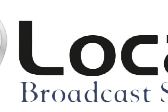Experts have long been predicting the demise of the local radio station. In the 1950’s, the cause of death was forecasted to be the television and in the 1970’s, it was home recording technolog. Current threats include satellite radio and the internet. Despite this, we believe that “Radio has a great future …. but success will not be automatically experienced and enjoyed across the industry”. While it may be troubling to broadcasters that most consumers consider traditional audio broadcast and the higher tech web or satellite distribution to both be “radio,” local stations and forward thinking sales people can thrive as they master some key drivers. Although it is likely that poorly run stations will limp along to an early grave, the best run stations can thrive even in the current environment. So don’t be too quick to write off the radio industry.
The positive future of radio will rely on flexibility, innovation, and the continued capability of sales teams to provide meaningful targeted audiences that bring advertiser’s more of their potential best customers. As we continue to experience shifts in competitive advertising factors, radio stations will rely more and more on top producing local sales executives and creative sales leaders. (A mission of our LBS video and marketing services is to assist these forward thinking sales leaders and broadcast sales pros to achieve lofty goals and identify winning trends.)
Radio stations and salespeople must continue to excel and aggressively drive revenue in each of these categories which are perfectly defined by Miller, Kaplan, Arase & Co:
- Spot – Revenue generated from traditional (on-air) :60, :30 and shorter length spots on radio stations on a market-by-market basis including “unwired rep networks”.
- Digital – All revenue derived from the website including: banner ads, tile ads, pop-up ads, internet/web streaming and dedicated streaming advertising, e-commerce; text and email messaging, other mobile media, web-afilliated relationships (Spot). Also includes HD, HD 2, and HD 3 stations.
- Network – Revenue generated by traditional (on-air) wired and traffic networks.
- Off-Air / Non-Spot / Non-Traditional Revenue – Revenue generated from and related to gate receipts, signage, concessions, sponsorships, merchandising and print activities (Spot)
Strategies for the four categories above must be well developed, keeping the following foundational platforms in mind:
- Professional Ethics: Your personal ability to select advertisers that best match your audience and develop the appropriate ad campaigns is critical to both maintain financially healthy clients and grow marketshare. Here again, poor-to-average sales executives will flounder while the best radio sales pros will be successful and prosperous.
- The Power of Radio: The sense of “hearing” remains a powerful influencing factor when gaining and capturing consumer mind share (if you don’t believe it, mute your TV’s sound and see how hard it is to stay focused on, and understand, commercials). The more you sell the value of radio and your station’s extended products, the more successful you will be at taking advantage of future sales opportunities. See the various LBS selling radio videos for idea starters to excel in these areas.
- Radical Innovation: The expansion of radio influence requires open minds and creative thinkers. Professionals must spend time considering innovative marketing strategies for today as well as out of the box thinking for tomorrow.
Radio will be in great hands as long as stations invest in the training and support of it’s leaders and sales teams. Stations who place their customer’s existing and future needs “first” will create a winning culture. Radio is a great place to be when the organization and sales teams have the inner drive to maximize existing revenue opportunities while also inventing new ways to remain relevant in an ever-changing ad environment! Many competitors would like to have the revenue track record of the radio industry! www.rab.com/public/pr/yearly.cfm
Happy Selling!





